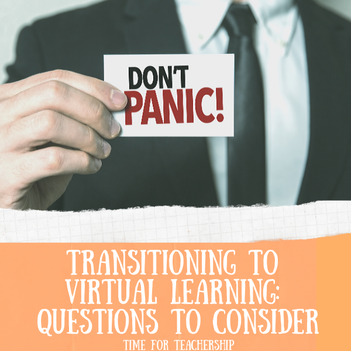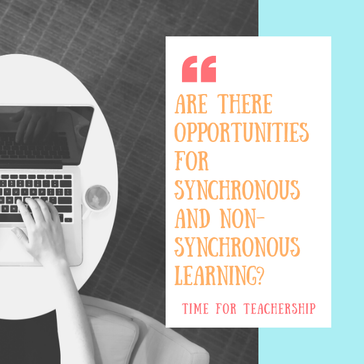|
The Coronavirus (COVID-19) has forced many districts to transition to virtual teaching during the school closures. When your go-to teaching styles are interrupted, and you’re forced to come up with new ideas for virtual learning at a moment’s notice, it is hard to move beyond the panic. This post aims to take a step back and focus on how to bring what you already know about quality pedagogy into virtual spaces. To dive into this, I pose a series of questions you may wish to consider that correspond with the 4 R’s framework that Transform·Ed Collaborative uses to promote equity in schools: Room Setup (your virtual “room” in this case) How are you organizing materials in the virtual space? Is it clear to students how they will learn new information, engage with it, and demonstrate their understanding of it? Is there a clearly designated space or process for students to use when they need extra support? Are there opportunities for synchronous (meeting in real-time) and non-synchronous (students engage in learning activities when they are able) learning? If students are unable to access virtual rooms because they do not have a device that will connect to the internet or their internet connection is poor, how might you be able to leverage programs like student meal pickups as a way to distribute paper copies of work? Rituals Do the procedures you use online mirror those you typically use in the classroom? (Do they achieve the same purposes?) Are the procedures consistent day-to-day so students don’t need to learn a new procedure or activity each day and can simply focus on the content? Have you considered including a ritual that promotes human connection and student well-being as part of the virtual learning experience? Relevance Is the content still relevant to their lives? Is there a way to tap into the current events that are directly impacting students’ daily lives (either as a check-in or as part of the curriculum?) Can students help co-construct the curriculum around what feels most relevant to them as individuals? Are you teaching new content or providing busy work until they return? (If you’ve been told not to teach new content, how could you encourage students to apply what they’ve already learned in class to what’s happening in the world right now?) Relationships Is there space and/or time carved out for members of the class to share their experiences and feelings regarding school closure and the spread of the virus (if they want to share)? Knowing students are physically cut off from their school environment and the socialization that comes with that, are there ways you can provide space for non-academic social interaction, opportunities to experience joy and a tiny sense of normalcy? Are there opportunities for students to meet with you 1:1 to conference as you might in a traditional school setting? As you consider each of these questions, your response and your ability to respond at all may be constrained by state requirements, access to devices and internet connections, your ability to teach when you may be teaching your own children at home now... There is no “right” answer. Each teacher’s circumstances, teaching style, students’ needs, and familiarity with teaching in virtual spaces will be different, and as thus, each teacher’s response will be different. That’s okay. These questions are intended to recenter your thinking around quality pedagogy (which, typically, you think about all the time, but in crisis, our brains go straight to survival-mode and may struggle to keep these concepts in mind). I hope these questions help you take a deep breath and think about what you can offer your students, not just just what you currently can’t offer. I’m sending positivity and resilience to all of the educators, families, and students out there making this work. You are each building your adaptability muscles and demonstrating incredible leadership in the middle of chaos. Keep being amazing.
1 Comment
Audrey Robles
3/25/2020 08:38:09 pm
Thanks for this. I've been doing your Master Class professional development and been wondering how to apply what I'm learning in this new teaching experience.
Reply
Leave a Reply. |
Details
For transcripts of episodes (and the option to search for terms in transcripts), click here!
Time for Teachership is now a proud member of the...AuthorLindsay Lyons (she/her) is an educational justice coach who works with teachers and school leaders to inspire educational innovation for racial and gender justice, design curricula grounded in student voice, and build capacity for shared leadership. Lindsay taught in NYC public schools, holds a PhD in Leadership and Change, and is the founder of the educational blog and podcast, Time for Teachership. Archives
May 2024
Categories |





 RSS Feed
RSS Feed